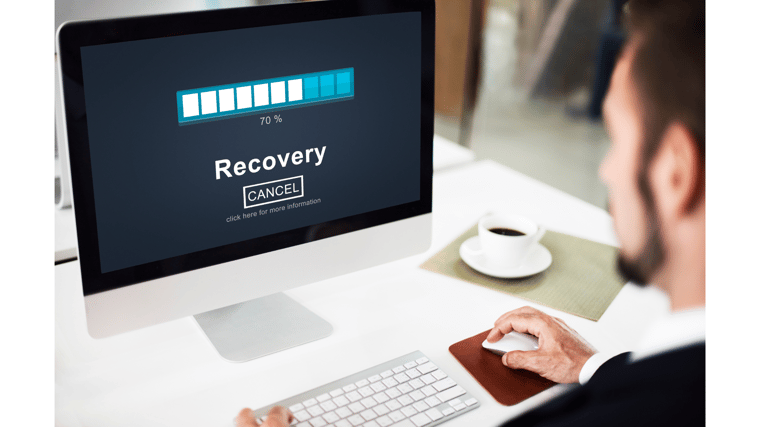Disasters, unforeseen events and cyber attacks will happen no matter what, but how you react to them can determine a lot when it comes to your business surviving or failing. If you are creating a business continuity plan (BCP) or a disaster recovery plan (DRP), chances are you have heard the terms recovery time objective and recovery point objective.
But what are they? What’s the difference between the two? Let’s find out.
Read: Avoiding Data Loss, Recovery and Backup Problems
What Are RTO and RPO?
Recovery time objective (RTO) and recovery point objective (RPO) are recovery objectives that are crucial to developing a BCP or DRP. They can help you create the necessary recovery efforts and get your business operations back to normal following a disaster or event, as downtime can result in productivity and revenue loss, reputational damages and customer frustration.
- RTO: This is the maximum time it takes to restore your company’s operations, infrastructure, services or applications following an event before it faces significant financial or operational losses. RTO is the more complicated of the two to calculate, as it involves the entire business structure. A subset of RTO is recovery time actual (RTA), which is the actual duration of the recovery process; you want the RTA to be within the RTA timeframe.

- RPO: This is the maximum amount of data a business can afford to lose from an event before it faces significant financial or operational losses. Another way to determine RPO is the maximum amount of time you can have between backups. By determining the maximum amount of data your business can lose, you decide how frequently you need to back up your data to have the most up-to-date version. A subset of RPO is recovery point actual (RPA), which measures the exact amount of data lost during the event; you want the RPA to be lower or equal to the set RPO.
How to Measure RTO and RPO
Both are measured in time, but there isn’t a mathematical formula for calculating them since the rates will vary for each company. RPO and RTO are measured from the moment the event happens and not when the IT team starts working on resolving issues, as the event impacts the company and clients immediately.
Calculating the two is a balancing act between budgetary restraints and the consequences of downtime and losing data. The lower the RPO or RTO, the more expensive the recovery or backup efforts become. For example, if your company needs continuous, repetitive backups, this will require high-speed backup technology and bandwidth. However, frequent, secure backups can help mitigate downtime by having up-to-date versions easily within reach.
Read: Pros and Cons of Different Data Backup Solutions
You should first consider the chance of the potential event happening, how often it might occur, what the negative effects on the business would be (lost productivity, revenue, etc.), cybersecurity compliance requirements and any existing vulnerabilities or potential risks to then determine what measures should be taken to have your preferred RTO and RPO.
Organize your company’s systems and data into tiers of criticality. The more significant an application or data is and its impact on your business, the lower the RTO and RPO should be for that item. For example, if you’re a major online retailer, you can’t afford to be offline for long, as you are losing customers by the second. An HR system, on the other hand, can tolerate being down for a few hours or even days.
From there, ensure your RPO and RTO align with your company’s business objectives, budget and roadmap. Regularly test your systems to ensure they can meet your RTO and RPO standards. Consider best practices like encryption, the 3-2-1 rule and air gapping to help protect your systems and data.
Thriveon Can Help Calculate RPO and RTO
If your business struggles with meeting cybersecurity compliance, has a limited budget or needs help creating a DRP, don’t fret. Outsourcing these tasks to skilled IT companies like Thriveon is a great way to ensure your business is secure.
Schedule a meeting with us today to find out how we can help your business stay safe.

